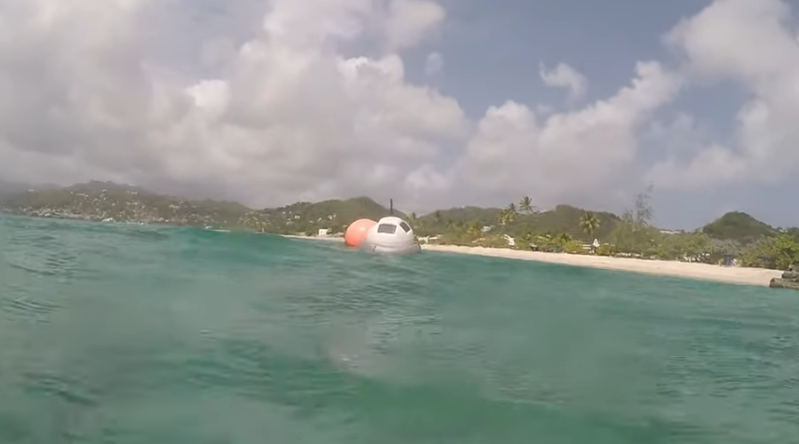Those beautiful and dangerous ocean waves that beckon us to the coast are more than just a pretty sight. They can tell us a lot about weather patterns and what the sea itself is doing. As vital as this information is, the existing methods of doing wave research are pretty expensive. The team at [t3chflicks] wanted to show it can be done fairly cheaply, to encourage more citizen scientists to contribute. More data means a better understanding, and open research benefits even those who don’t actively participate.
They have developed a smart buoy that collects wave data and transmits it back to a base station for real-time display. The buoy runs on an 18650 that gets recharged by four 5V solar panels situated around the top half of the 3D-printed hull. An Arduino inside the buoy controls the sensors, most of which are baked into the GY-86 10-DOF module. The antenna on top sends the data back to a Raspi Zero base station, which charts wave height, wave period, wave power, water and air temperature, and barometric pressure in real-time on a spiffy Vue JS dashboard.
The team had their ups and downs during this project. They wanted to measure wave direction, but it proved a bit too complicated. And memory issues prevented them from backing up the data to an on-buoy SD card. You can catch the more in-depth hardware and software videos on their YouTube channel. We’ve got the smart buoy summary video tied up and floating just after the break.
Want to help buoy wave research, but don’t have a 3D printer? Sealed PVC makes a fine flotation device, as we saw in this water quality-sensing buoy.


















Nice project!
Thanks!
They had ups and downs… Lol
It’s a TIDEy build.
Real funny, MRE. As a former Coast Guard buoy tender radioman, It was just that.
I’ve always thought that kind of thing would be interesting, except for the parts of being on a rolling boat in severe weather. Also, I had no idea there was the job title of “Coast Guard buoy tender radioman”. That’s awesome. I had a good PDF somewhere about oceanic research and a guy that did buoy design and deployment. Unfortunately, I lost it in the great disk crash of ’12, and can’t remember who wrote it.
Just remember,
The word “tender” is also used in “legal tender” as in something to be exchanged.
And to the gov’t, is it possible that they consider the life of a buoy radioman a suitable exchange for an operational buoy?
Back when I was a Second Lieutenant (2LT) I was told that us “Lieuys” were expendable…
B^)
Worked for the U.S. Dept of Navy at a tactical vehicle T&E facility in a previous life. We used (modified, now called ‘hacked’) wave-rider buoys. There is a delimited range of mass and volume for the buoy. Too small or too big can cause bad data. Would recommend that the ‘T3CH’ people talk to an engineer with oceanography experience.
Our buoys were seldom water-borne for more than 10 days, and were set just outside and within the surf zone; but sensor corrosion and salt-water intrusion were still problems. Positive-pressure systems using nitrogen helped, as did using electrical bulkhead couplings developed at Scripps. At places such as Monterrey Bay, Ca and Hawaii north-facing, gave the buoys some wild rides. The buoys were about 1.4m diameter, so were large enough to stack them with sealed-lead batteries (also needed the mass) which were good for 14 days. They did not log data, but transmitted data via FM telemetry, with an IBM AT talking to the receiver and recording the data.
David Taylor Research Center (or whatever it is currently named) in Maryland took our rough engineering and produced a world-class electrical and mechanical design. Am told that thirty years later, the same basic design is being used for littoral and surf measurements.
Hi, thanks for taking the time to look at our project. Sounds like you have more expertise in this area than us, by a long shot! We’ll definitely take a look at some of the things you have mentioned.
Wow, great work! I did a similar project back in 2016 but never got around to publish any data around it and actually got stuck on problem surround sensor accuracy. Will definitely be following your progress! Had to get some of my pictures up from my project into a Hackaday project to share some of my work. Maybe I’ll un-shelf it. I did a custom board with sensors, dual battery handling, solar charging, SD-card and GPS with long range LoRA communication. Please let me know if you want some more info on that. https://hackaday.io/project/168182-wavebee